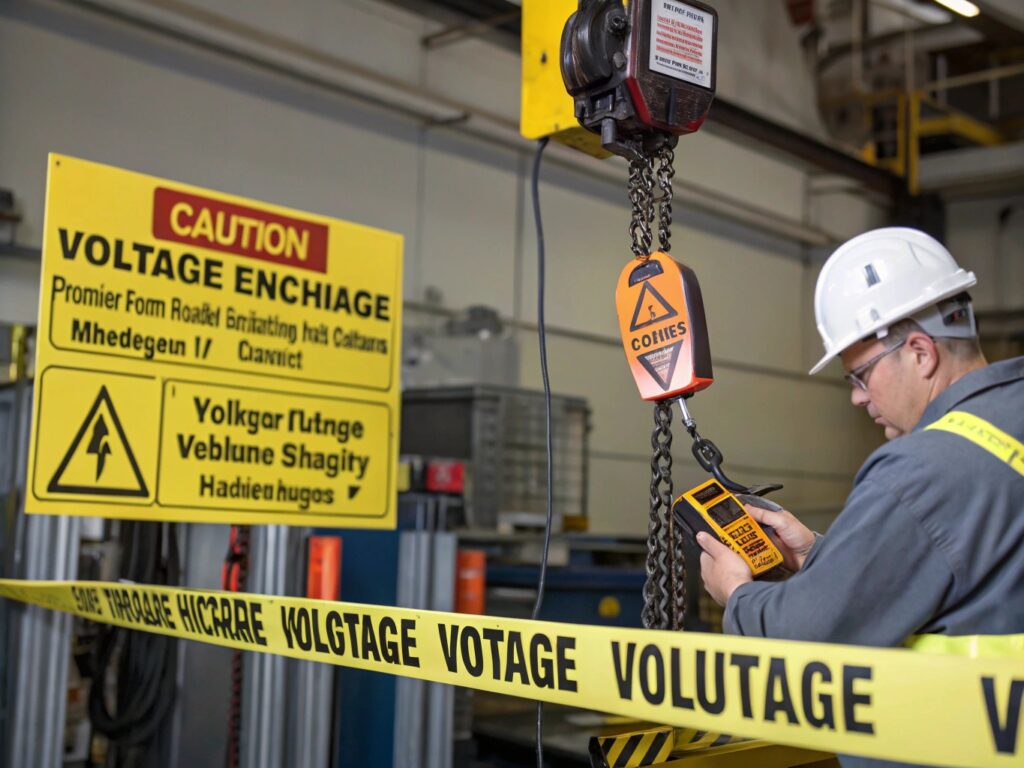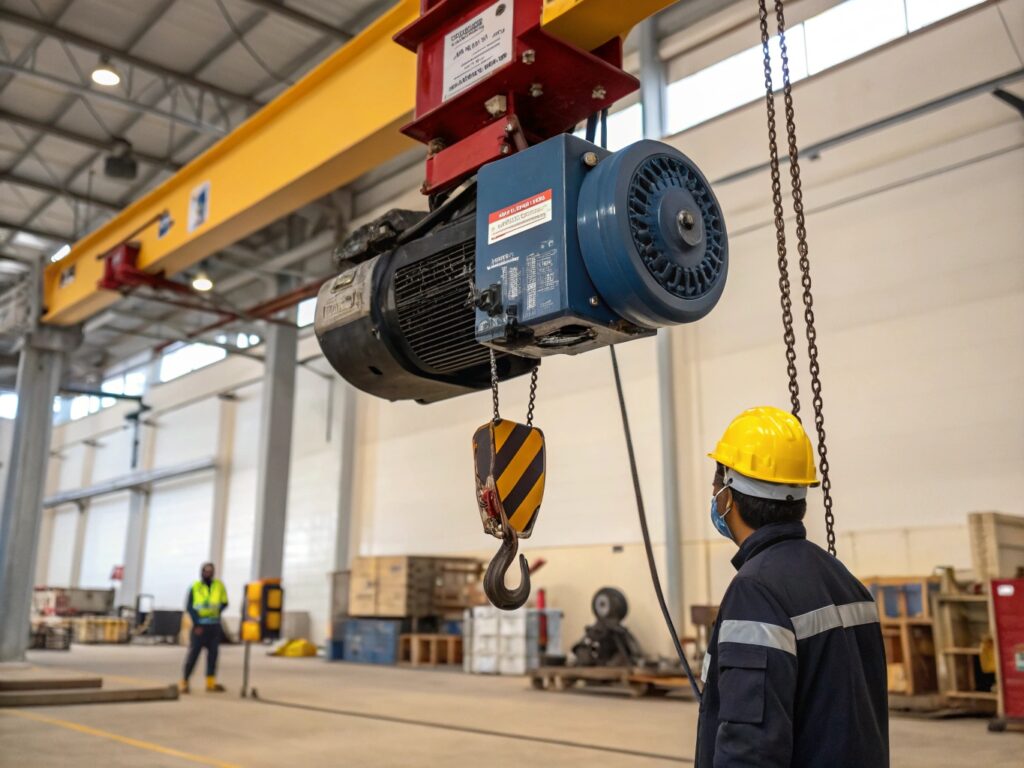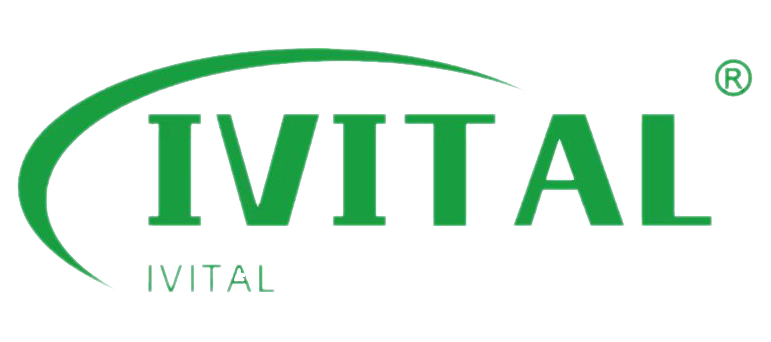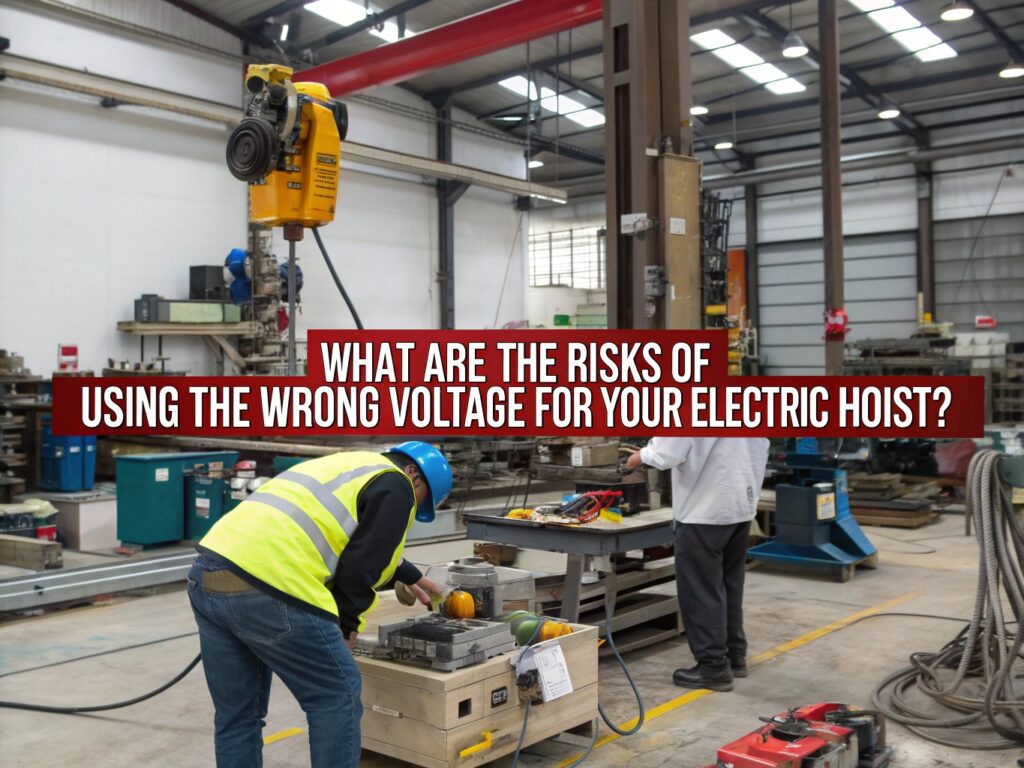
Using the wrong voltage for your electric hoist can lead to expensive repairs, serious safety hazards, and unexpected downtime. In this article, I’ll walk you through the risks of using the wrong voltage and how to avoid these dangers to keep your operations running smoothly.
Voltage issues, such as insufficient power supply or fluctuations, can cause your hoist to malfunction. This leads to poor performance, potential motor damage, and even complete failure of the hoist. It’s essential to ensure that the voltage supplied to your electric chain hoist is within 10% of its rated voltage to avoid these risks. Timely voltage checks can prevent downtime and maintain smooth operation.
Understanding the risks is the first step. But how can voltage issues impact your hoist’s performance and safety? Let’s dive deeper and explore the potential consequences of choosing the wrong voltage for your hoist.
What Are the Hazards of Hoists?
When using hoists, the biggest hazard is equipment failure under load. Poor voltage can cause your hoist to underperform, and if left unchecked, this can lead to serious accidents. I’ve seen firsthand how even small voltage fluctuations can result in dropped loads or worse, mechanical damage to the hoist itself.
Incorrect voltage leads to underperformance, load failure, and in some cases, injury or death. Always ensure your hoist is within the correct voltage range to avoid these dangers.

Voltage Risks and Load Failures
Let’s break it down. If your hoist operates at a voltage lower than its rated level, the motor will struggle to lift the load as expected. This can lead to a failure under load, causing the hoist to drop the weight, potentially harming personnel or damaging surrounding equipment. Additionally, voltage fluctuations can make your hoist move erratically, making it harder to control and increasing the risk of accidents.
For example, in a construction site I visited, a hoist with a voltage fluctuation dropped a heavy load, causing significant damage to materials and injuring one worker. The root cause? A simple mismatch in voltage. It’s a clear reminder of how voltage issues shouldn’t be underestimated.
What is the Control Voltage of a Hoist?
The voltage of the hoist control circuit is essential for safe and efficient operation. If the control voltage doesn’t match the hoist’s requirements, you can expect operational disruptions or worse, equipment damage.
The control voltage can vary depending on the hoist transformer. Typical control voltages are 48VAC or 110VAC, but it’s critical to check the manufacturer’s manual to ensure you’re using the right power source for your hoist.
Dive Deeper: Choosing the Right Control Voltage
Different hoists have different control voltage requirements. Choosing the wrong one can cause malfunctioning in the control system, leading to erratic hoist movement or even total failure. I’ve worked with hoists where the control voltage was mismatched, and the results were disastrous—an electrical short that fried the motor.
It’s important to follow the manufacturer’s voltage specifications to prevent these issues. Also, never rely solely on an electrician’s opinion. Always double-check with the equipment’s technical manual before starting any work.
What is the Most Common Hoisting Hazard?
The most common hazard in hoisting operations is contact with high-voltage power lines. This is an ever-present danger when hoisting equipment is used near power lines, and incorrect voltage can make it harder to detect potential issues like electrical shorts or grounding failures.
High-voltage contact is a significant risk, and mismanagement of your hoist’s voltage increases the chances of accidental contact with power lines, leading to severe injury or even fatalities.
Dive Deeper: Why Hoist Operators Should Be Extra Cautious Near Power Lines
Working under high-voltage power lines requires constant vigilance. In one case I remember, a crane operator miscalculated the safe clearance distance because voltage issues caused unexpected movements in the hoist. The result? The crane boom accidentally made contact with the power line, sparking a serious electrical hazard. While this wasn’t directly caused by incorrect voltage, a properly maintained system could have prevented the accident.
Always check for any voltage issues and ensure that your hoist and crane systems are correctly maintained. Educate your team on the risks of working near power lines, and establish strict safety protocols.
What Are the Two Most Common Accidents When Using Hoists?
Overloading and poor rigging are the top two causes of accidents when using hoists. However, incorrect voltage can exacerbate these problems by causing the hoist to behave erratically or fail to lift the load efficiently. This increases the chances of both overloading and poor rigging accidents.
Overloading and poor rigging are dangerous on their own, but incorrect voltage can worsen these risks. Always verify voltage settings to ensure proper hoist function.
Dive Deeper: How Voltage Issues Can Lead to Overloading and Rigging Problems
When the voltage is too low, the hoist motor struggles to carry its load, which might lead to overloading or jerky movements that put excessive strain on the rigging. In my experience, I’ve witnessed hoist malfunctions where workers had to improvise rigging to compensate for the poor performance caused by incorrect voltage. These unsafe practices can lead to catastrophic accidents.
How Can Voltage Fluctuations Affect Hoist Performance?
Voltage fluctuations can significantly affect your hoist’s performance. If the voltage is too low or fluctuating, the motor may not work as efficiently. It may also cause erratic movement, leading to unsafe lifting conditions.
Voltage fluctuations can make hoist operation unpredictable, leading to inefficient lifting, damaged motors, or even complete failure of the hoist system.
How to Mitigate Risks of Incorrect Voltage in Hoisting Operations?
Mitigating voltage-related risks involves regular maintenance, proper voltage monitoring, and ensuring the correct power supply for your hoist. Here are a few best practices:
- Always check voltage before starting any hoist operation.
- Use voltage stabilizers or surge protectors to prevent fluctuations.
- Train your team to recognize and address voltage-related issues immediately.
- Ensure compliance with the manufacturer’s specifications for voltage and power supply.
Conclusion
Proper voltage is essential for safe hoist operation. Regular checks, adhering to specifications, and investing in quality electrical systems can minimize the risks and ensure smooth operations.



